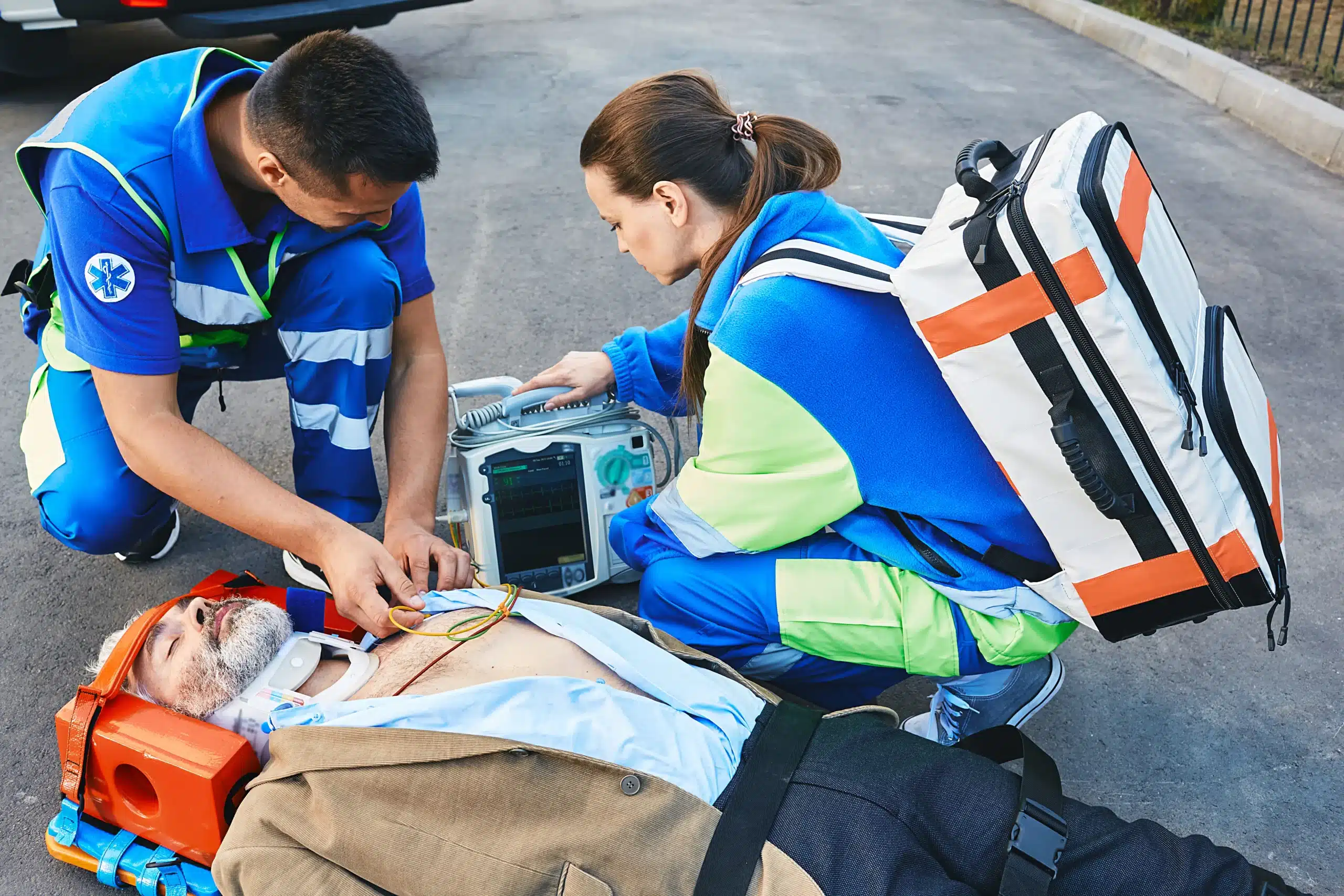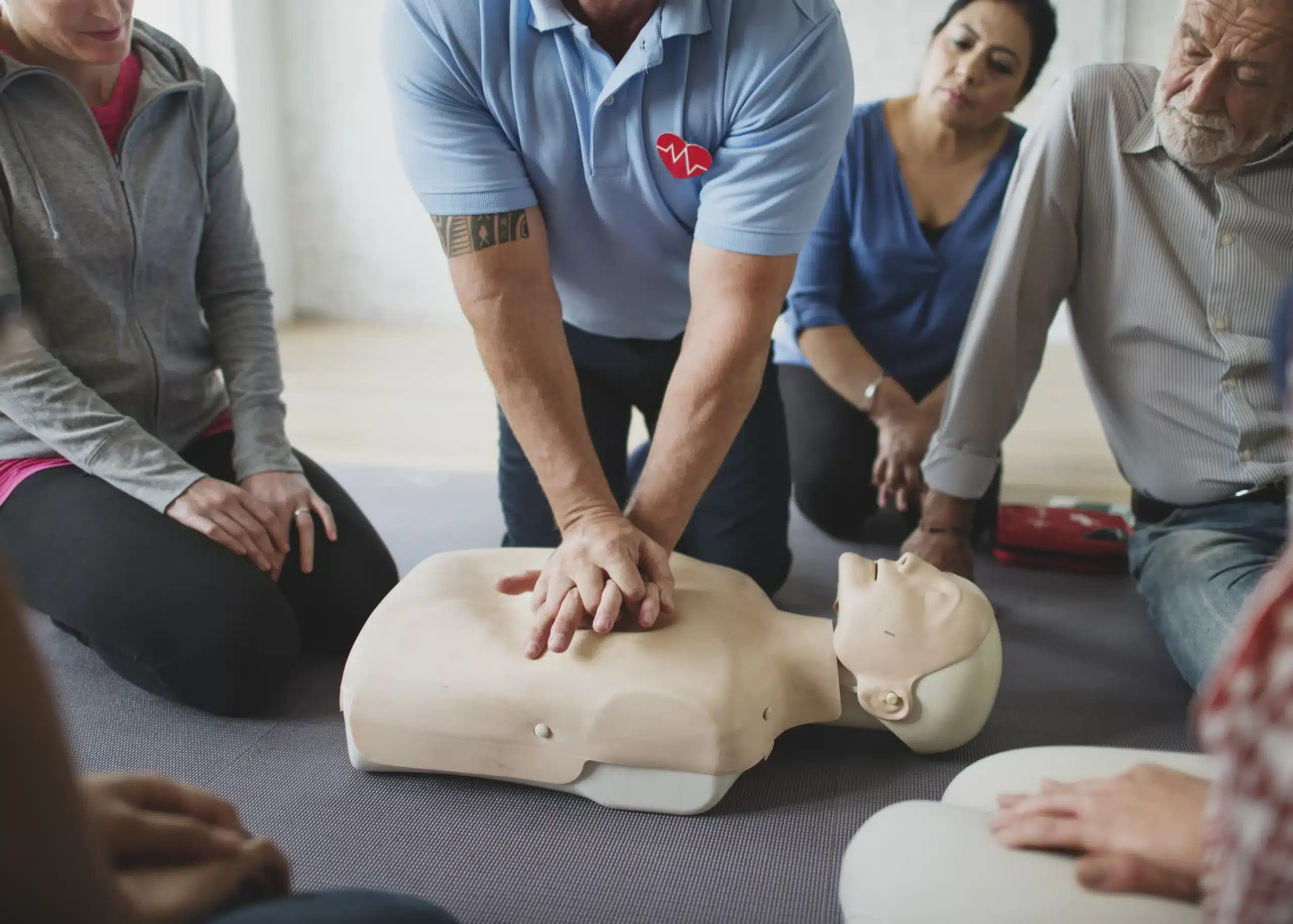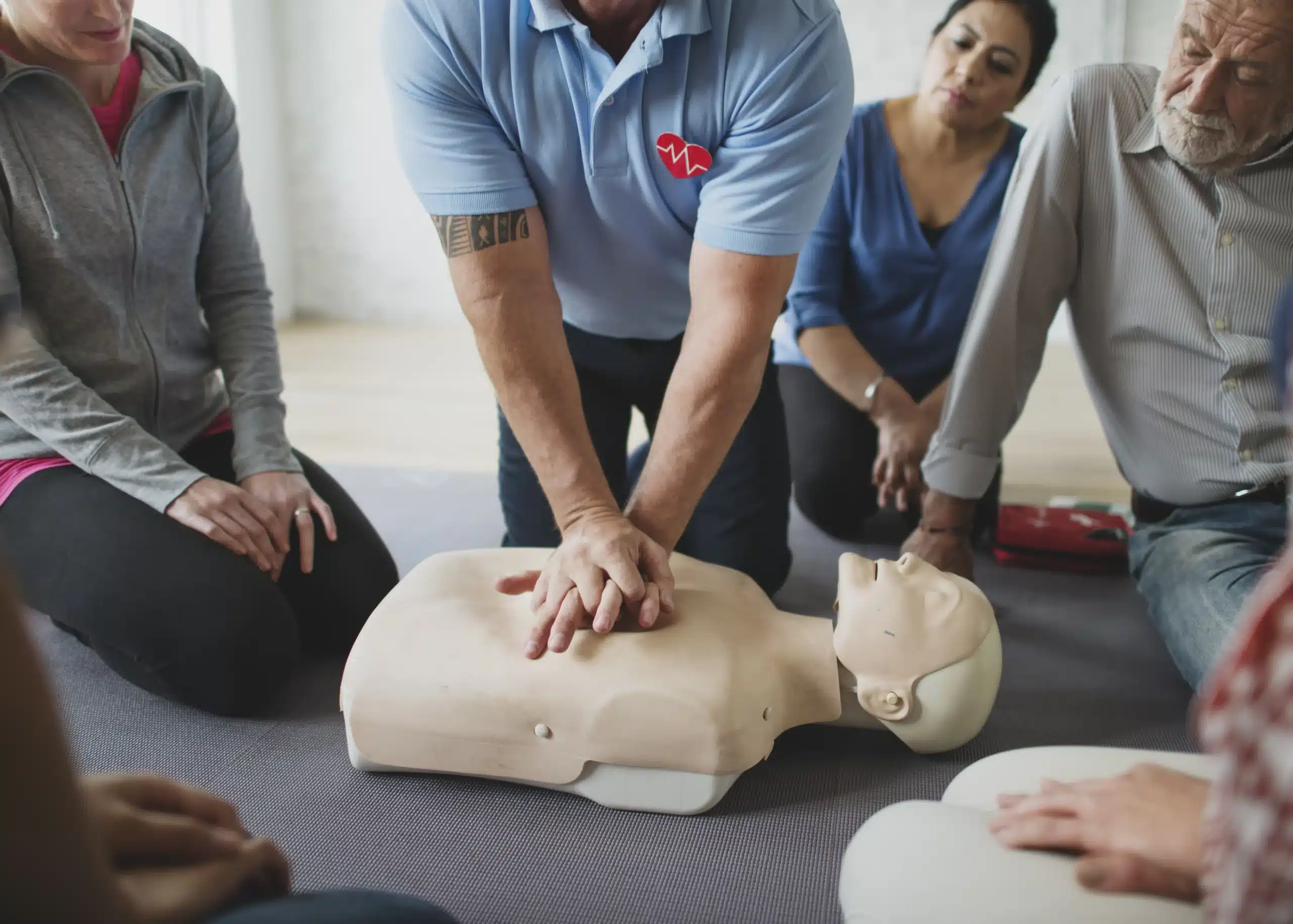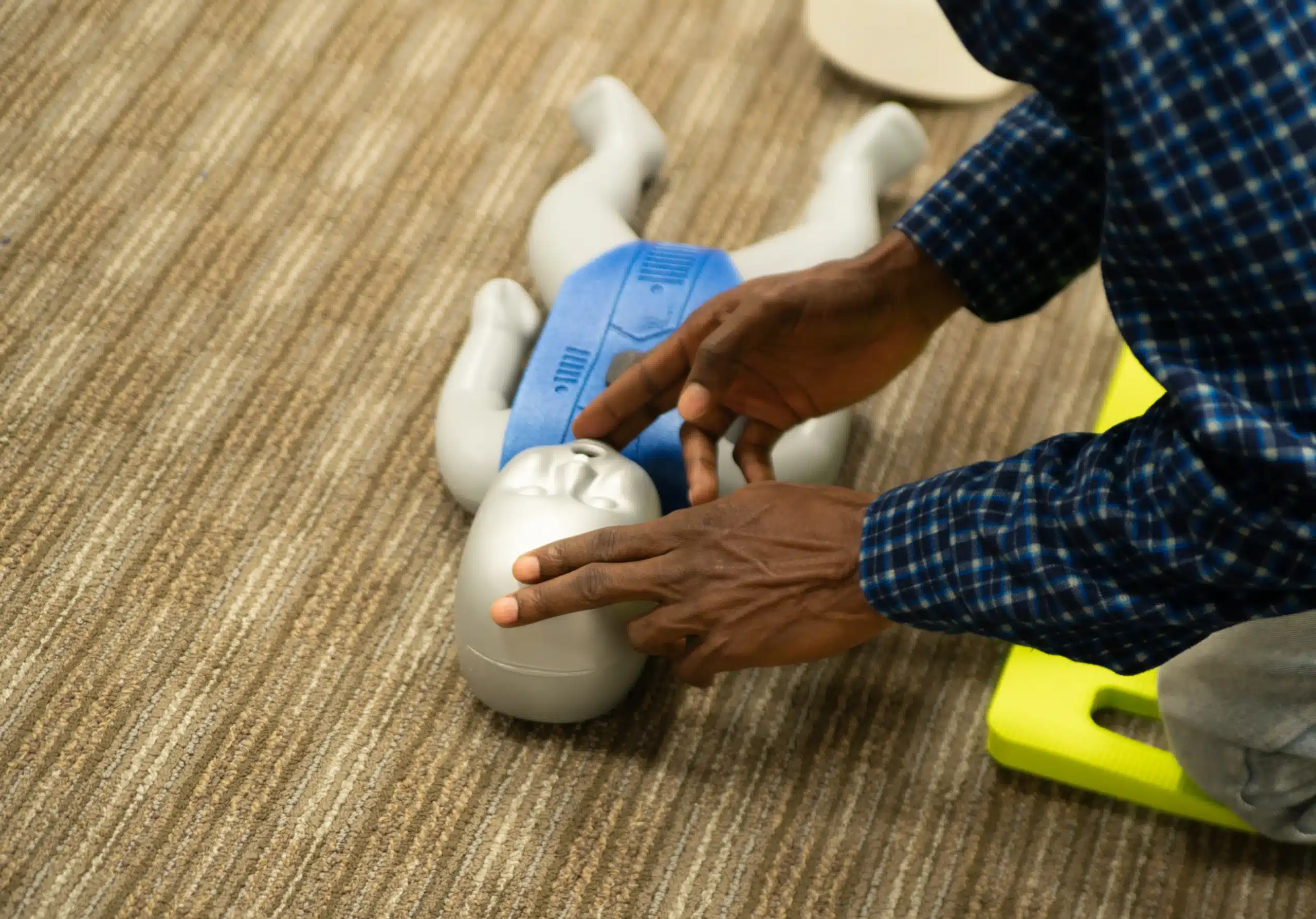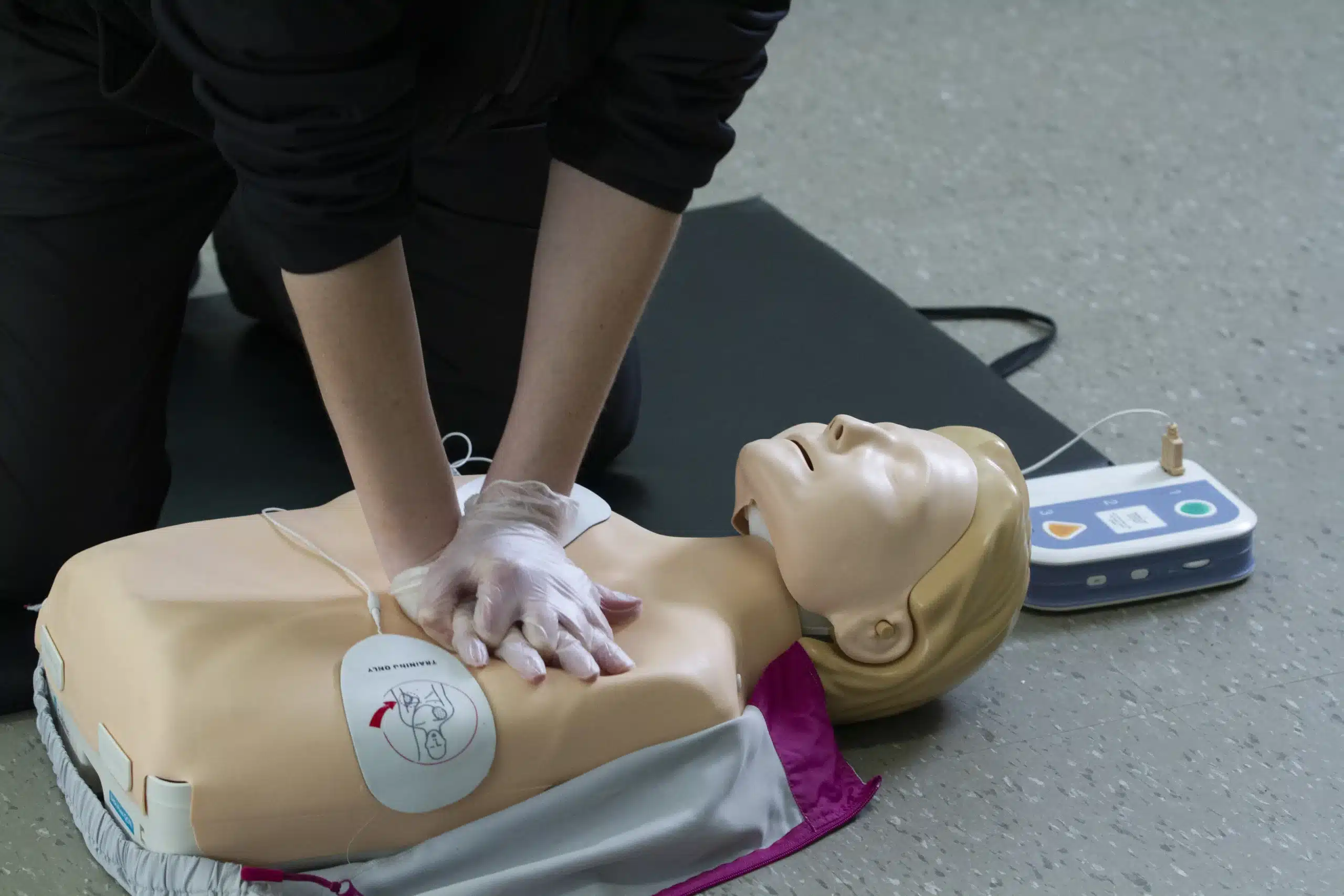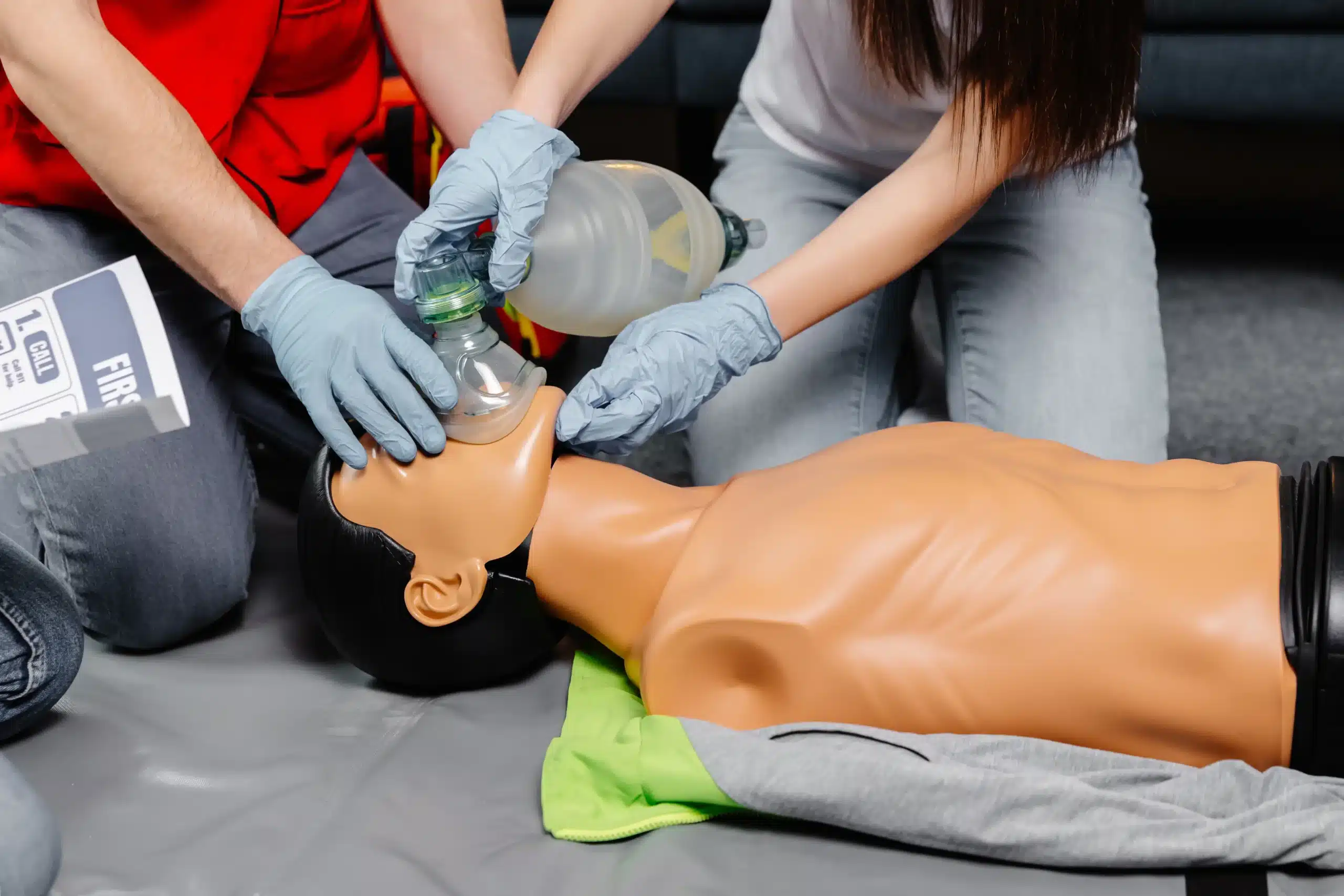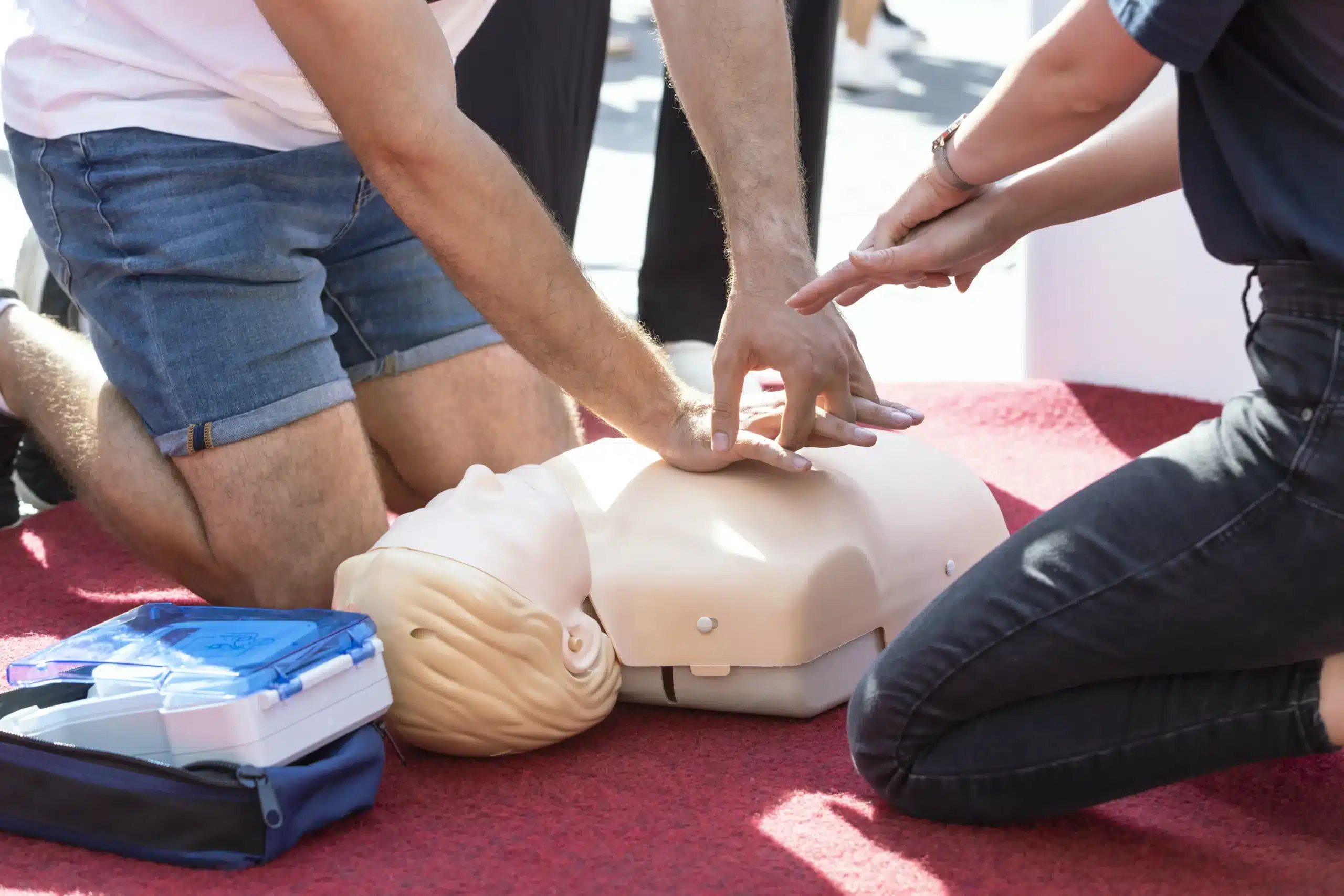Medical emergencies can happen anytime, anywhere. Being equipped with Basic Life Support (BLS) skills can empower you to make a life-saving difference. BLS certification provides the training you need to respond effectively to critical situations like heart attacks, strokes, and choking. This article is your go-to resource for all things BLS, from understanding its core components to finding “BLS classes near me.” We’ll cover the benefits of certification, the skills you’ll learn, and how to choose the right course for your needs. Get ready to take the first step toward becoming a certified lifesaver.
Key Takeaways
- BLS skills empower you in emergencies: Equipping yourself with BLS training builds confidence and prepares you to provide crucial support during medical crises, potentially saving lives. Explore various course formats to find one that suits your needs.
- Finding a quality BLS course is simple: Prioritize AHA-certified providers like Campbell CPR Classes or the American Red Cross. Consider factors like course content, cost, and format (online, in-person, or blended) to make the best choice. Look for available discounts.
- Regular practice keeps your BLS skills sharp: Renew your certification every two years and engage in consistent practice between renewals. Utilize online resources and refresher materials to maintain your knowledge and preparedness for real-life emergencies.
What is BLS?
Basic Life Support (BLS) is a critical level of medical care used in life-threatening emergencies like heart attacks, strokes, drownings, and choking. Think of it as the immediate, essential steps taken to keep someone alive until more advanced medical help arrives. While related to CPR, BLS certification goes further. It provides a broader skill set for healthcare providers, equipping them to handle a wider range of emergencies. BLS covers essential techniques like CPR, of course, but also includes using automated external defibrillators (AEDs) and relieving airway obstructions in both adults and children. It emphasizes teamwork and high-quality chest compressions, vital components of effective emergency care. If you’re considering a career in healthcare, BLS certification is often a must-have.
What Does BLS Mean?
BLS certification signifies that you’re trained to provide immediate, life-saving care in emergencies. It gives you the skills and confidence to respond effectively under pressure, whether you’re a healthcare professional or not. BLS empowers you to assess a situation, perform CPR, use an AED, and provide basic airway management. This knowledge can make a profound difference, potentially saving lives in critical situations. It also emphasizes the importance of early intervention and high-quality CPR in improving patient outcomes. For more information, check out our BLS for Healthcare Providers blog post.
Why is BLS Important?
BLS is crucial because it bridges the gap between the onset of a medical emergency and the arrival of professional medical help. Studies show that community initiatives promoting BLS training significantly improve bystander CPR rates, directly impacting survival rates. When someone nearby knows BLS, they can step in immediately, administering life-saving care that can dramatically increase the chances of survival. Fast response times are critical in emergencies, and widespread BLS training empowers communities to respond effectively. It’s about being prepared and equipped to make a difference when it matters most. Learn more about how community involvement can promote Basic Life Support implementation.
How to Find Great BLS Classes Near You
So, you’re ready to get your BLS certification—smart move! Whether you’re entering the healthcare field or want to be prepared for emergencies, BLS training is invaluable. Finding the right class can make all the difference in your learning experience. This section breaks down how to find a great BLS class near you.
Choosing a BLS Provider
First things first: you’ll want to choose a reputable BLS provider. Look for providers accredited by the American Heart Association (AHA). AHA-certified courses meet the highest standards and are widely accepted. Also, consider the course content, instructor qualifications, and whether they offer in-person, online, or blended learning options. A good provider will clearly outline these details on their website.
Top Local BLS Class Providers
Depending on your location, you’ll find several options for BLS classes. Here are a few common providers to explore:
Campbell CPR Classes
Campbell CPR Classes is a woman-owned, AHA-certified training center offering various certification courses, including BLS, ACLS, PALS, CPR, and First Aid. They focus on excellent customer service and offer a low-price guarantee for their courses in Campbell, serving San Jose, Campbell, and Cupertino.
American Red Cross
The American Red Cross is another well-known provider of BLS certification courses. They offer a range of courses designed to equip you with essential life-saving skills.
American Heart Association
While the AHA doesn’t directly conduct classes, they set the standards for BLS certification. Many employers require AHA-approved certifications, so it’s essential to choose a training center that adheres to these guidelines. You can often find a list of AHA Training Centers on their website.
Hospitals and Medical Centers
Many hospitals and medical centers offer BLS training courses. These are often convenient for healthcare professionals working within the system. For example, Hartford HealthCare offers a variety of AHA-certified courses.
Community Colleges
Your local community college can be a great resource for affordable BLS training. They may offer courses tailored to specific professions or career paths. The American Association of Community Colleges website can help you find a college near you.
Online vs. In-Person BLS Classes
When choosing a BLS class, you’ll typically have two options: online and in-person. Online BLS courses offer flexibility, allowing you to learn at your own pace. Blended learning formats, like those offered by Campbell CPR Classes, combine online coursework with an in-person skills session. In-person classes provide hands-on training and direct interaction with an instructor. Consider your learning style and schedule when making your decision.
Find BLS Classes Near You
Finding a BLS class near you is easier than ever. Start by searching online for “BLS classes near me.” You can also check local training centers, hospitals, community colleges, and online platforms that offer certification. Don’t hesitate to contact providers directly to ask about their schedules, pricing, and course content. Choosing the right BLS class is the first step toward gaining these vital life-saving skills.
What Happens in a BLS Class?
BLS certification classes cover essential life-saving techniques. You’ll learn how to recognize life-threatening emergencies, provide high-quality chest compressions, deliver appropriate ventilations, and use an AED. These skills prepare you to respond effectively to emergencies like heart attacks, strokes, choking, and drowning.
BLS Skills You’ll Learn
BLS classes teach a systematic approach to patient care. You’ll learn to assess the scene, check for responsiveness, activate the emergency response system, and begin CPR. The curriculum emphasizes early intervention and high-quality CPR, including chest compressions, airway management, and rescue breaths. You’ll also learn how to use an automated external defibrillator (AED) safely and effectively. BLS certification equips you with the skills to respond confidently during those critical first few minutes of a medical emergency.
Class Format and Length
BLS classes typically use a blended learning format, combining online coursework with in-person skills sessions. This flexible approach makes scheduling easier. The online portion covers the theoretical knowledge, while the in-person session focuses on hands-on practice and skills assessment. Classes generally last between 2.5 and 4.5 hours, depending on the specific course and provider. Campbell CPR Classes offers this convenient blended learning format to accommodate busy schedules.
Prerequisites
There are no specific prerequisites for taking a BLS class. However, the American Heart Association (AHA) BLS course requires both an online component and an in-person skills assessment. Completing the online portion before attending the in-person session is usually required.
Prepare for Your BLS Class
To get the most out of your BLS class, consider your learning style and schedule when choosing between online and in-person options. If you’re new to BLS, an in-person class offers direct instruction, hands-on practice, and immediate feedback from certified instructors. This format can be especially helpful for developing confidence and mastering the practical skills. For those seeking initial certification, the in-person option often provides a more comprehensive learning experience. If you’re already familiar with BLS, the blended learning option may be a good fit.
How Much Does BLS Certification Cost?
Getting your BLS certification is an investment in your skills and ability to help others. But how much does it actually cost? Let’s break down typical BLS certification prices, explore ways to save, and discuss why this training is so valuable.
Typical BLS Class Prices
BLS class prices vary based on location, provider, and what’s included in the course. You can expect to pay somewhere between $70 and $100 for a BLS certification course. This usually covers the instruction, course materials, and your certification card. Some providers may offer additional perks like online resources or practice sessions. Campbell CPR Classes offers comprehensive BLS training, including the latest techniques and AHA-approved certification. They prioritize excellent customer service and offer competitive prices in Santa Clara County, backed by a Low Price Guarantee.
Discounts and Promotions
Many training centers offer discounts and promotions, so it’s a good idea to keep an eye out for those! Check providers’ websites and social media for current deals. You might find discounts for group registrations, students, or early bird sign-ups. For example, Safety Training Seminars has offered discounts on their CPR courses in the past. Taking advantage of these offers can make BLS training even more affordable.
Campbell CPR Classes’ Low Price Guarantee
Campbell CPR Classes is committed to providing high-quality BLS training at competitive prices. They offer a Low Price Guarantee, ensuring you get the best possible value for your training. If you find a lower advertised price for a comparable BLS course in Santa Clara County, they will match it. This commitment to affordability makes Campbell CPR Classes a great option for those seeking quality training that fits their budget. You can learn more about their courses and pricing on their website.
The Value of BLS Certification
While cost is a factor, it’s important to consider the immense value of BLS certification. This training equips you with life-saving skills. Whether you’re a healthcare professional or not, BLS training gives you the confidence to respond effectively in medical emergencies. Knowing how to perform CPR, use an AED, and provide basic life support can make a profound difference in someone’s life. The ability to act quickly and confidently in a crisis is invaluable. You can learn more about BLS for healthcare providers on the Campbell CPR Classes blog.
Get and Keep Your BLS Certification
Get Certified
Getting your Basic Life Support (BLS) certification is straightforward. Organizations like the American Red Cross and the American Heart Association (AHA) offer comprehensive BLS certification courses designed to equip you with the skills to handle medical emergencies. These courses cover essential life-saving techniques, including CPR, AED use, and how to relieve choking. Check with your employer or state licensing board to ensure you enroll in the correct course for your profession. For example, healthcare providers typically require a healthcare provider BLS certification. At Campbell CPR Classes, we offer a variety of BLS courses to meet your specific needs. Contact us to learn more.
Renew Your Certification
BLS certification is typically valid for two years. To maintain your credentials, you’ll need to renew your certification before it expires. Renewal courses are readily available, both online and in person, offering flexibility to fit your schedule. Make a note of your expiration date and plan to recertify a few weeks in advance to avoid any lapse in your certification. Campbell CPR Classes offers convenient renewal courses to help you stay current.
Stay Sharp Between Certifications
Even with a valid certification, regular practice is key to maintaining proficiency in BLS skills. The Red Cross offers helpful refresher materials, including quizzes, games, and videos, to help you stay sharp between certification periods. These resources can reinforce your knowledge and build your confidence in applying BLS techniques when needed. Regularly reviewing these materials can make a significant difference in your preparedness for real-life emergencies. Consider adding practice sessions to your routine to keep your skills fresh.
BLS Certification Myths
It’s important to separate fact from fiction when it comes to BLS certification. One common misconception is that the AHA offers a fully online BLS course. However, AHA BLS certification requires both an online component and an in-person skills assessment. There’s no fully online, AHA-certified BLS course available. Be sure to research BLS requirements thoroughly to avoid any surprises during your certification journey. If you have questions, reach out to your chosen training center for clarification. They can provide accurate information and guide you through the process. Campbell CPR Classes is committed to offering clear and accurate information about our BLS certification courses. We’re here to help you every step of the way.
Related Articles
- Your Guide to BLS Classes in San Jose – Campbell CPR Classes
- BLS Certification in Cupertino for Healthcare Providers – Campbell CPR Classes
- BLS Renewal Near Me: Find the Right Course – Campbell CPR Classes
- BLS Certification in Cupertino: Your Complete Guide – Campbell CPR Classes
- BLS in San Jose: Your Certification Guide – Campbell CPR Classes
Frequently Asked Questions
What’s the difference between CPR and BLS? CPR is a specific technique used within BLS. BLS encompasses a broader range of skills, including CPR, using an AED, and relieving airway obstructions. Think of CPR as one tool in the BLS toolkit. BLS certification provides a more comprehensive understanding of emergency care.
How do I choose a BLS class? Look for training centers accredited by a recognized organization like the American Heart Association (AHA). Consider factors like instructor qualifications, course content, and whether they offer in-person, online, or blended learning options. Check reviews and compare prices to find a course that fits your needs and budget. Don’t hesitate to contact providers directly with any questions.
What if I don’t work in healthcare? Do I still need BLS? Absolutely! BLS training is valuable for anyone who wants to be prepared for emergencies. Knowing how to respond effectively in a crisis can make a real difference, whether you’re at home, at work, or out in the community. It empowers you to help family, friends, or even strangers in need.
How long does BLS certification last, and how do I renew it? BLS certification is typically valid for two years. Renewal courses are readily available through various training providers, often offered in both online and in-person formats. Check with your certifying organization or training center for specific renewal requirements. Set a reminder to renew a few weeks before your certification expires to avoid any lapse in your credentials.
Are there any fully online BLS certification courses? While some portions of BLS training may be available online, the American Heart Association (AHA) requires an in-person skills assessment component for their BLS certification. A fully online course won’t meet the AHA’s requirements. Be sure to choose a course that includes both online and in-person components to receive a valid AHA BLS certification.


